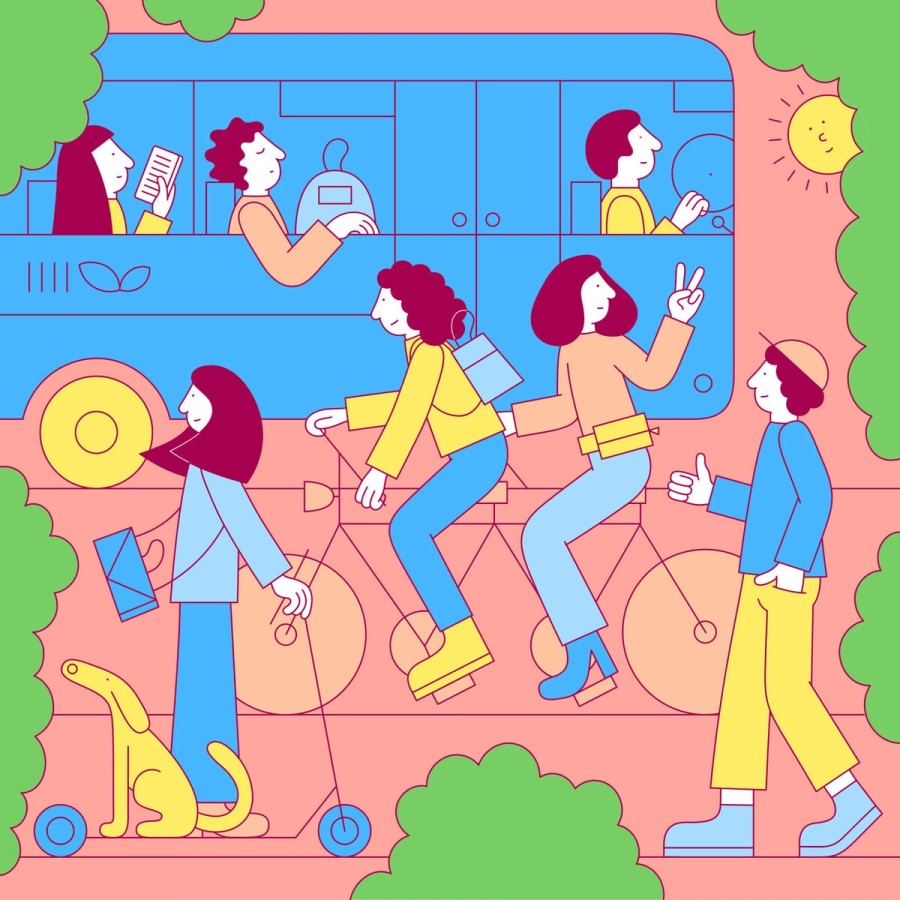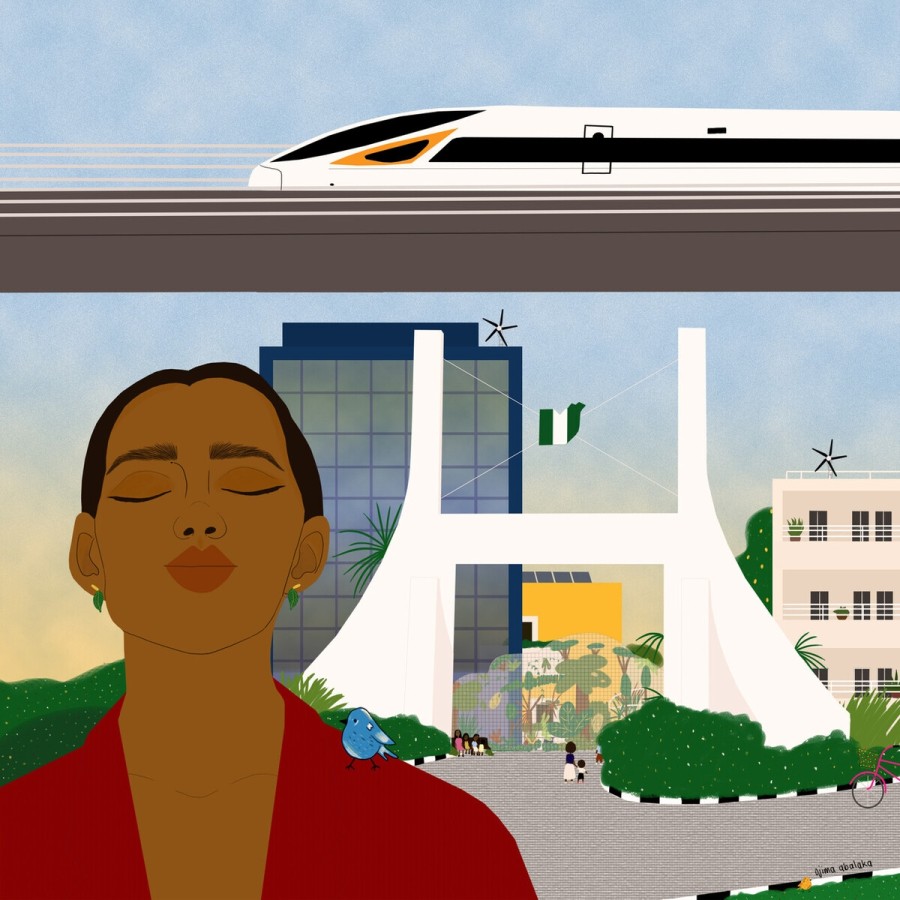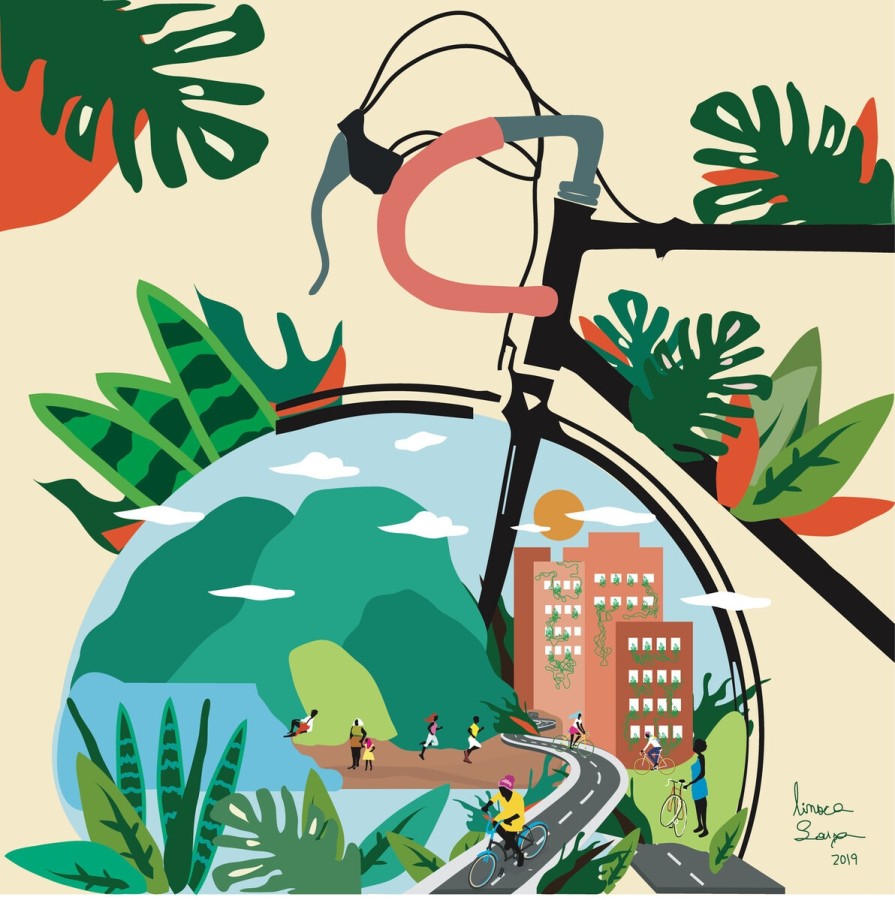Using a low-carbon mobility option instead of driving is one of the most effective actions that people can take to help stop the climate crisis.
Walking and cycling and using public transport should be the main ways people get around a neighbourhood. This can be encouraged through well-designed urban spaces and services. Reclaiming city spaces from private vehicles, encouraging street vegetation, and developing supporting services for bikes are especially important to create more inclusive, safer and more enjoyable routes to cycle and walk.
Key concepts
Design streets to make walking and cycling an easy option
-
Widen sidewalks, increase street crossings and improve how easier it is to move around by walking.
-
Create dedicated cycle lanes and provide new cycling routes or links to existing ones.
-
Use street designs, layout and materials to promote right of way for pedestrians and cyclists.
-
Introduce speed restrictions for cars.
-
Include trees and green areas to make it pleasant to walk and cycle.
Develop public transport infrastructure
-
Invest funding from both public and private businesses to improve and expand the public transport network. Connect different types of transport and important places.
-
Make sure public transport is frequent and reliable for instance by providing dedicated lanes for buses
-
Make sure different types of public transport work well together, like buses and trains, so that people have a smooth journey.
-
Make sure public transport is easy for everyone to use, especially people with disabilities and older people.
-
Use technology to make public transport safer and more convenient. For example, track transport in real time to give people updates on departure and arrival times, create easy payment methods, and power transport using clean energy.
-
Talk to the community and passengers for their ideas and feedback to make the changes work for everyone.
Develop services and partnerships to support pedestrians and cyclists
-
Provide secure parking and repair services for bikes and invest in affordable and accessible (e.g including non-standard cycles ) bike-sharing and hire schemes.
-
Partner with businesses to drive a transition to active work journeys, such as offering financial incentives for cyclists and pedestrians, purchasing shared (electric) bicycles and providing end of journey facilities, such as showers, changing facilities and lockers.
Implement tactical urbanism to inspire residents
-
Reclaim spaces temporarily from cars at weekends and during the summer for recreational, sporting or cultural activities.
-
Design your areas in a fun way that supports socialising, for example by using temporary installation of street furniture, reversible painted ground signs, or mobile tree planters.
Reclaim spaces from private vehicles
-
Develop “School Streets” which aims to introduce temporary restrictions on motorised traffic on school streets at drop-off and pick-up times.
-
Make it less attractive and easy to drive into the city by reducing the availability of parking.
-
Repurpose city car park buildings for other uses such as warehouses, community or data centers or urban logistic hubs and transform surface parking lots into pocket parks, cycle lanes or micro-logistic hubs.
-
Read more about C40's The Future is Public Transport Campaign
Use zero carbon, shared or private vehicles as a last resort mobility option
- To de-incentivise the use of individual fossil fuel transport, your designs should first encourage the use of public transport, and then consider shared vehicles and electric and other low-emission vehicles.
-
Provide electric vehicle parking, solar powered car ports, and charging points.
-
Introduce an electric vehicle hire scheme.
-
Introduce low emissions zones within the neighbourhood, acknowledging the needs and priorities of local residents and people who typically travel to the area.
Questions?
If you have a question or would like more details on the Students Reinventing Cities competition, please use the form below. You will receive a response via email.






